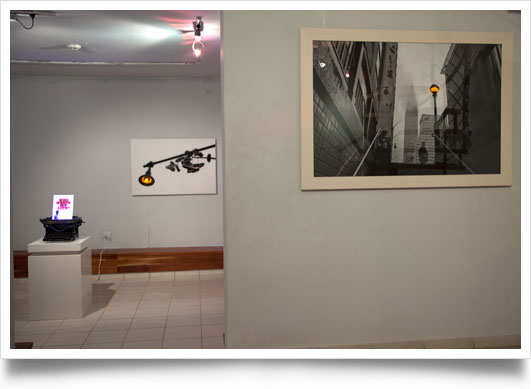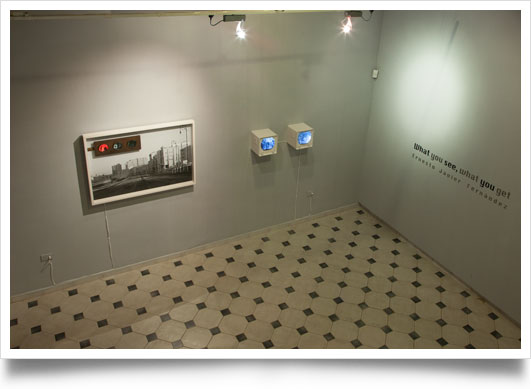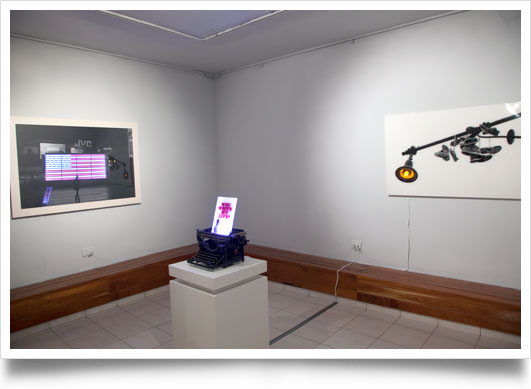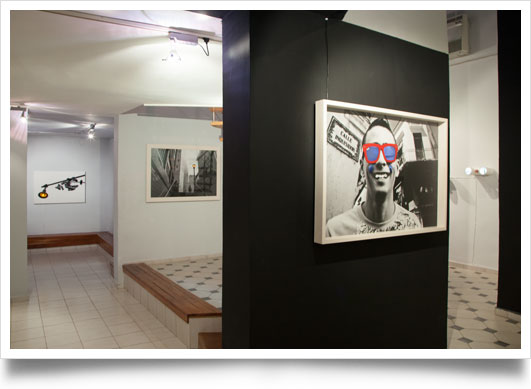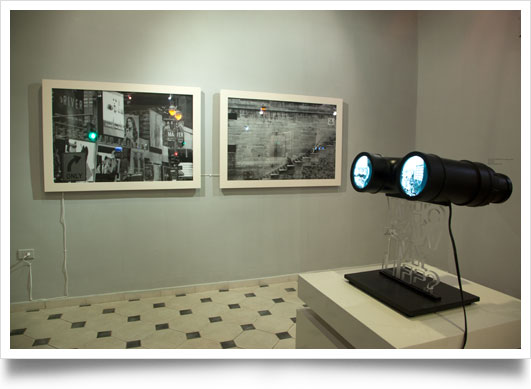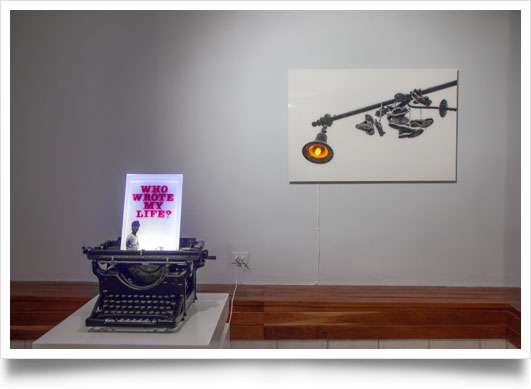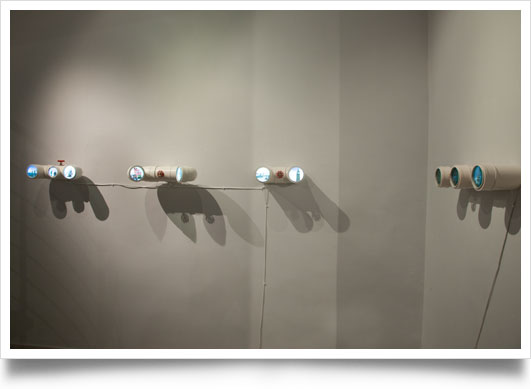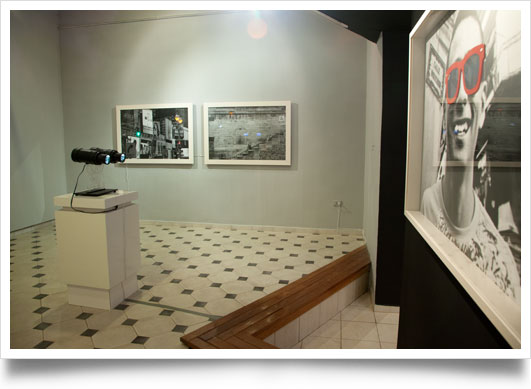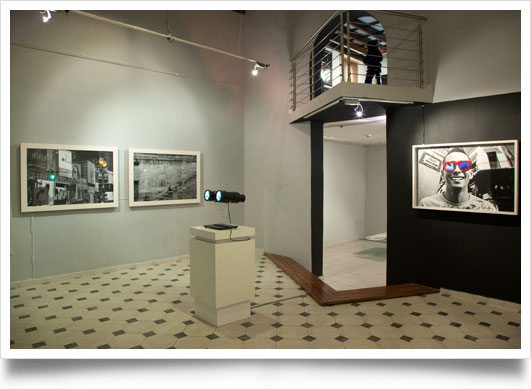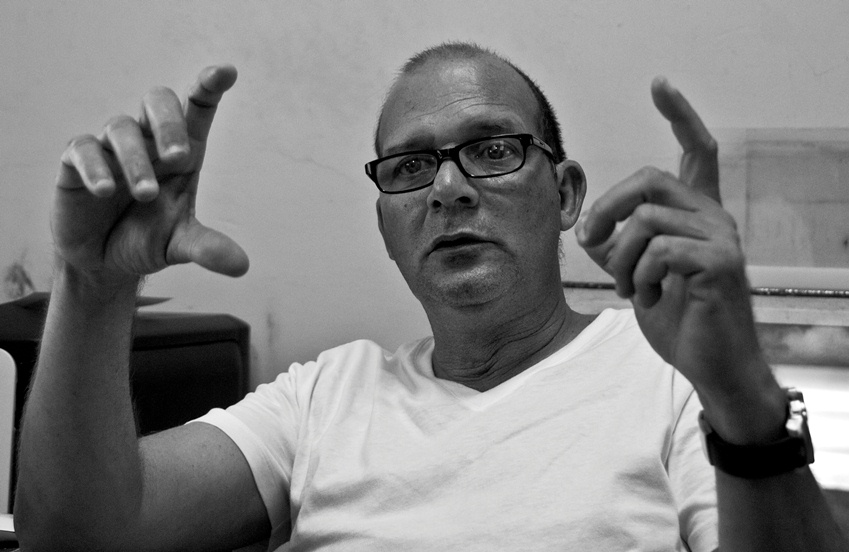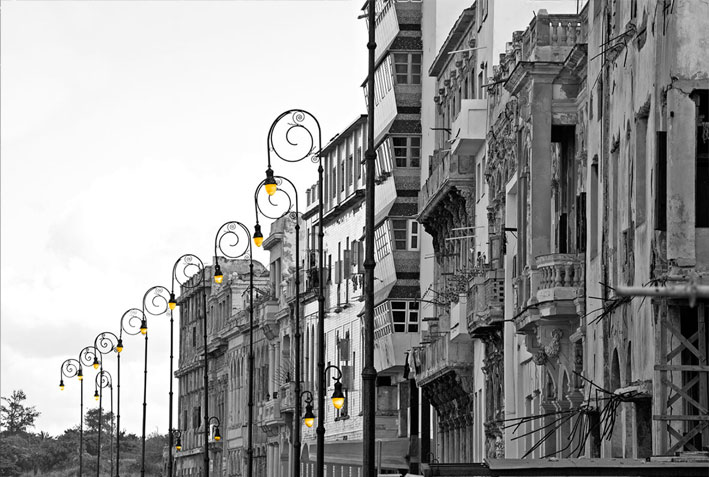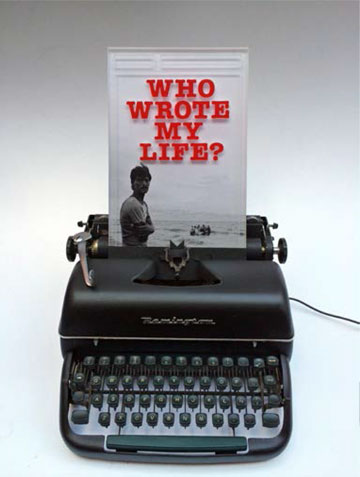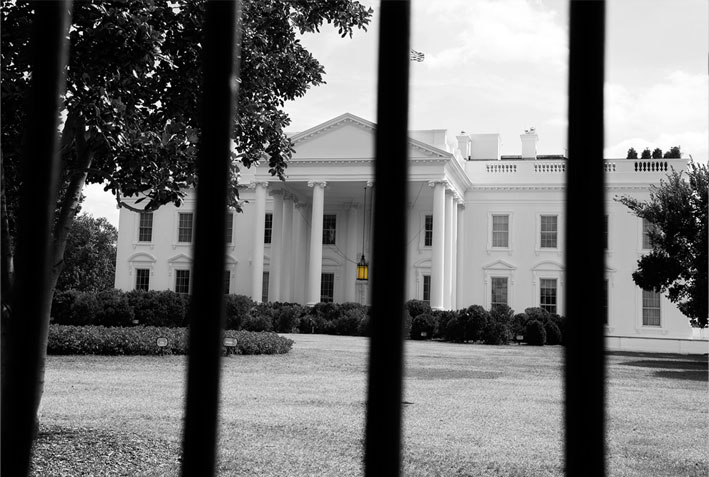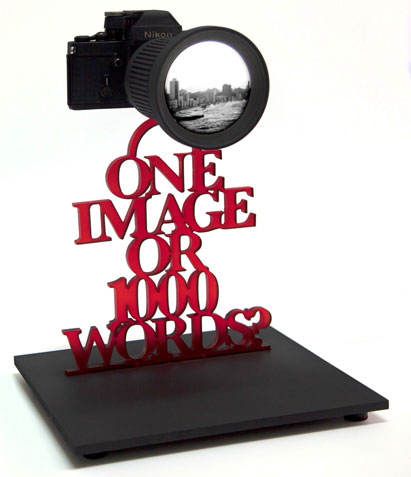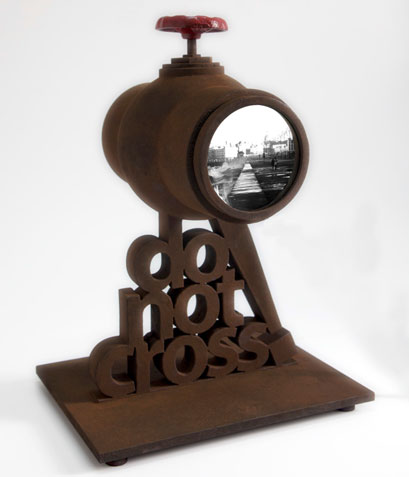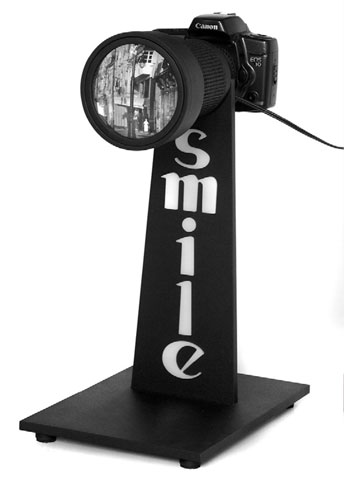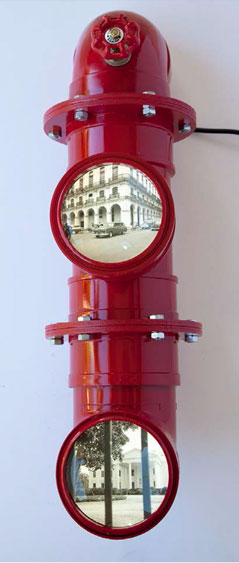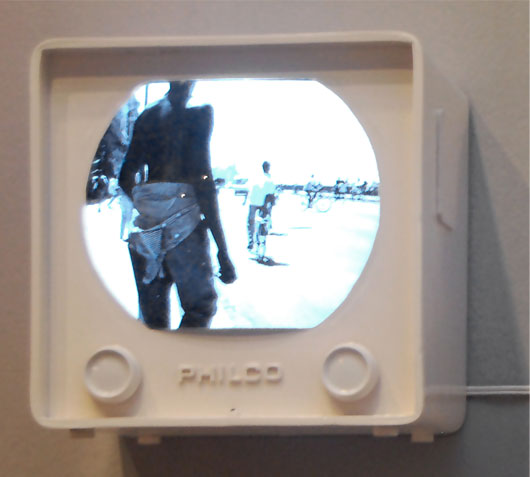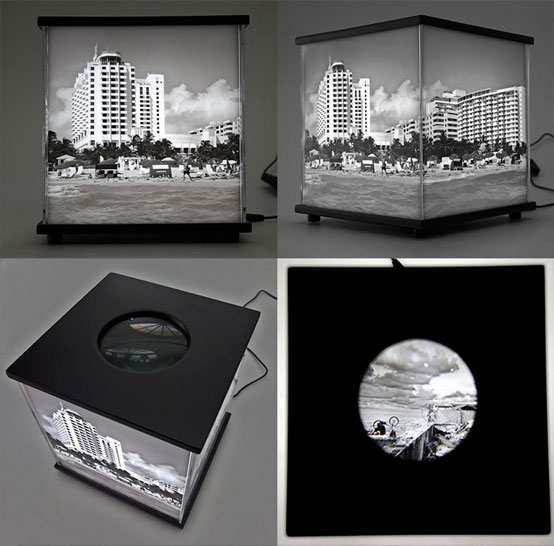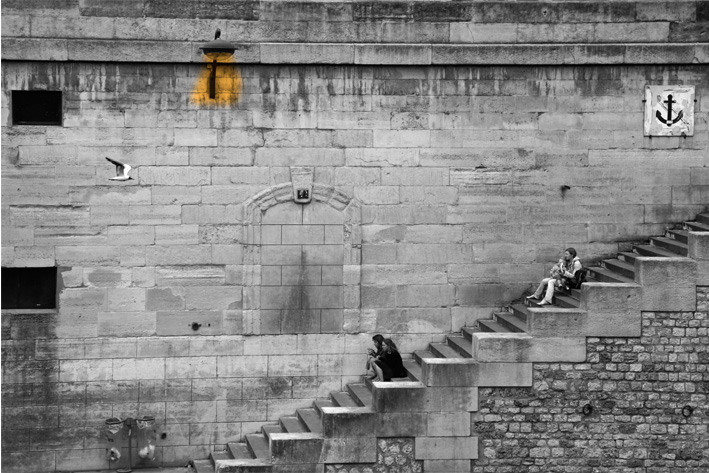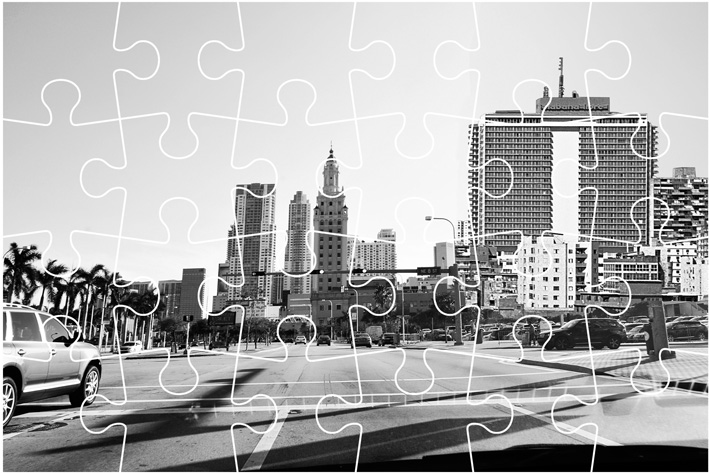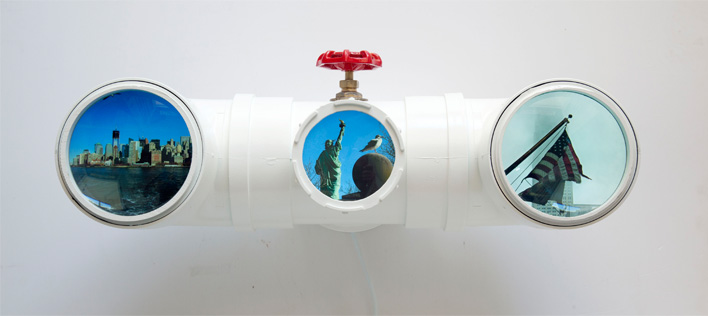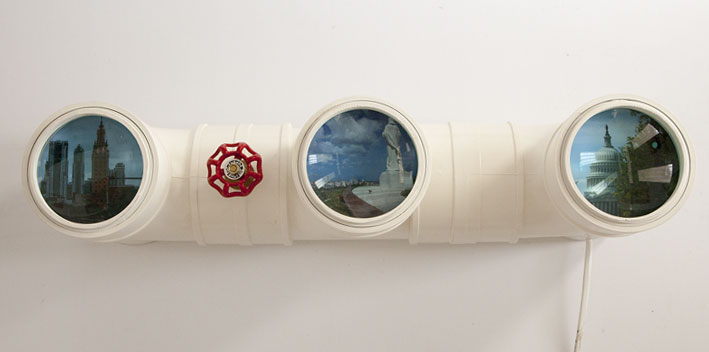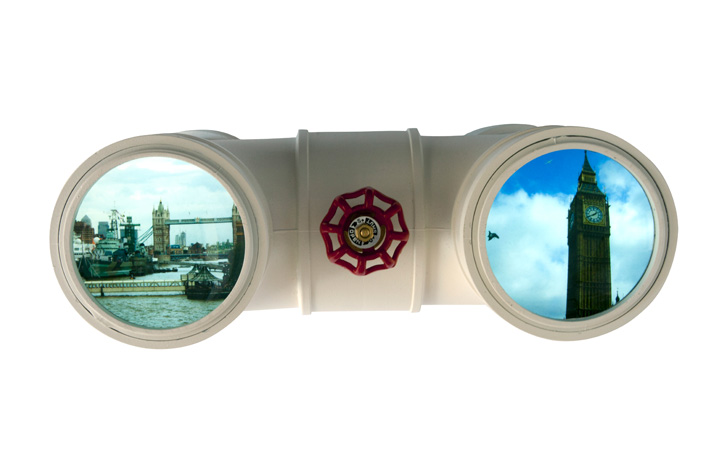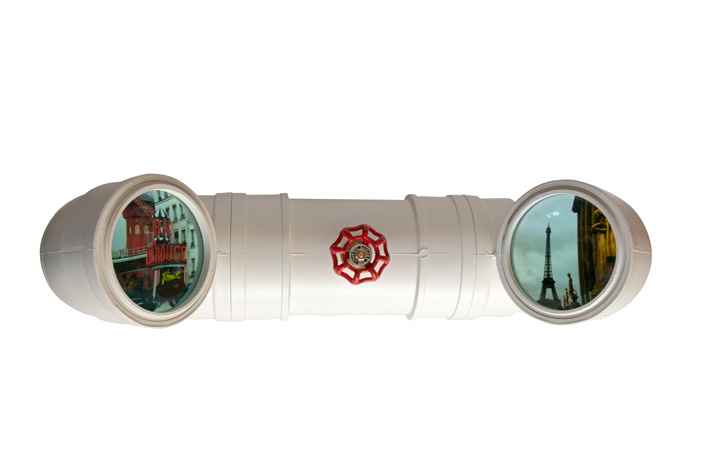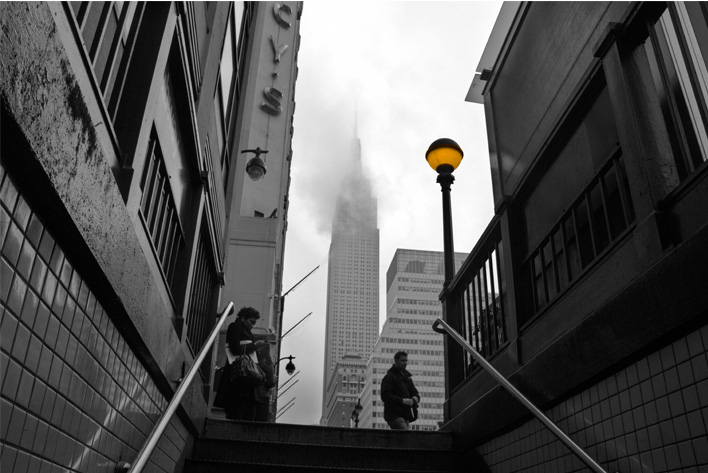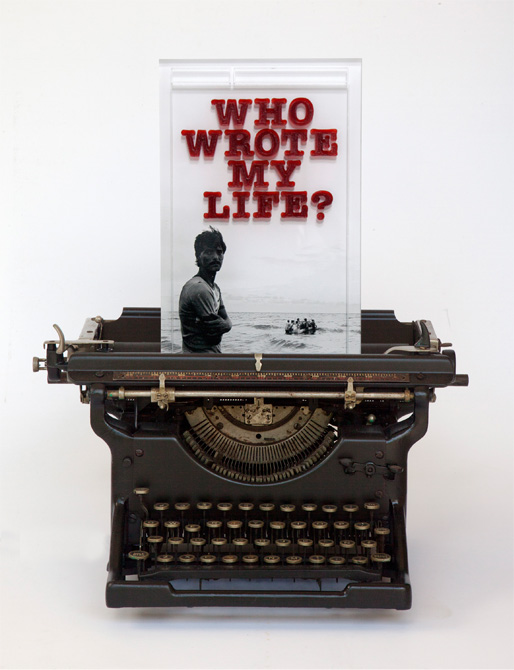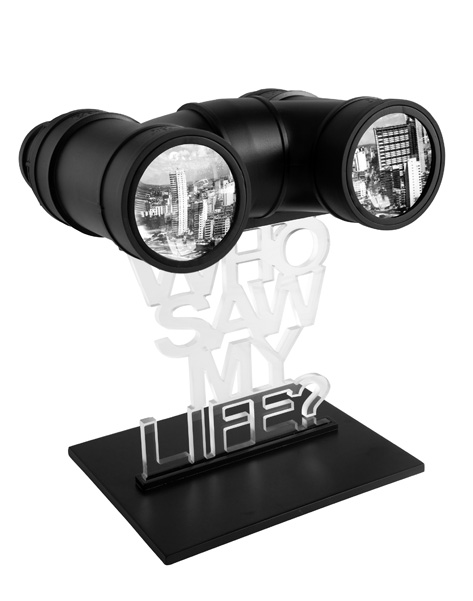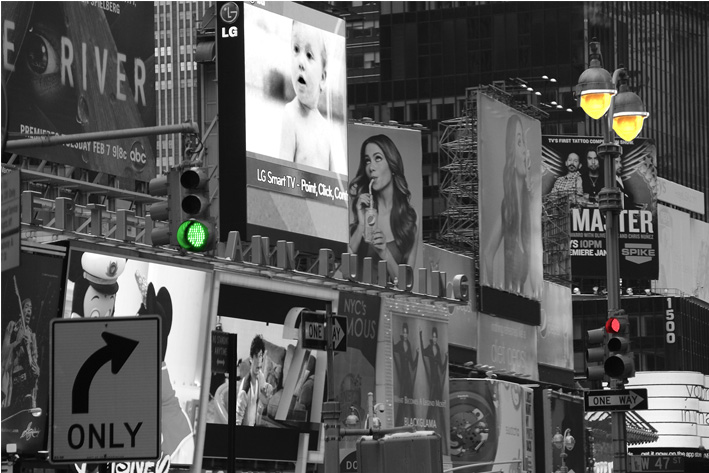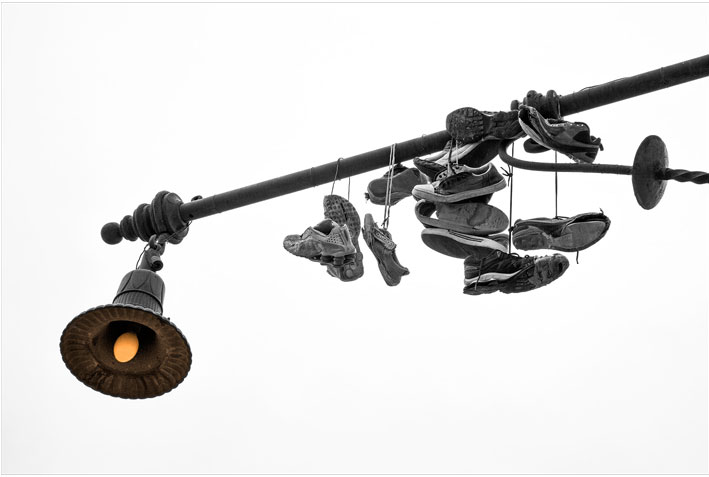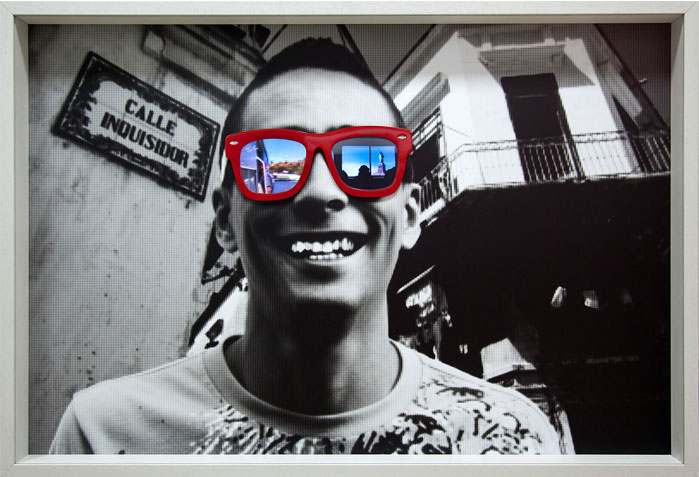What you see, what you get
Another turn of the screw in photography (fragments)
Ernesto Javier is not content with only the force of the image, since he establishes other novel relations with it in the midst of a technological and at the same time poor context. Hence the fact that they evoke, recall, not only the theme or the subject that makes them identifiable to any spectator, but also that they operate as messengers of a close period of time, of a past that systematically corrodes the present. Photography is now an object that illuminates and kills, like José Martí’s star. Having eliminated the traditional wooden or metal frame that generally contributes to highlight the image in its full splendor, photography now conquers a new space halfway between the private and public spaces, a “no man’s land” where the theatrical, constructive and sculptural elements plus installation articulate as principal pieces of a puzzle whose outcome we ignore. The images are part of a much wider visual discourse that uses them for diverse purposes, not just esthetic or reflexive.
Ernesto Javier is a constructor of memories, a designer ready to exalt us by means of evocations and reminiscences, and who will never forgive our lack of memory in these times when everything is fleeting, when everything vanishes as if by magic into the real and virtual of existence. Although his images mix formally with neon, lights, plastics, wood, metals, they remain headstrong in our perception, but above all in our memory although the spectator did not share the experience with the photographer. If his form of exhibiting, disseminating, conveying them is through objects constructed by him, he confirms with it his detachment from the traditional reportage and the discovery of a new type of photographic essay linked to the present multi-disciplinary craft, without need of proclaiming it today as happens with some creators (who despair to make it quite clear and in a loud voice), clinging to such an old idea, attitude and behavior.
Nelson Herrera Ysla
Artworks

